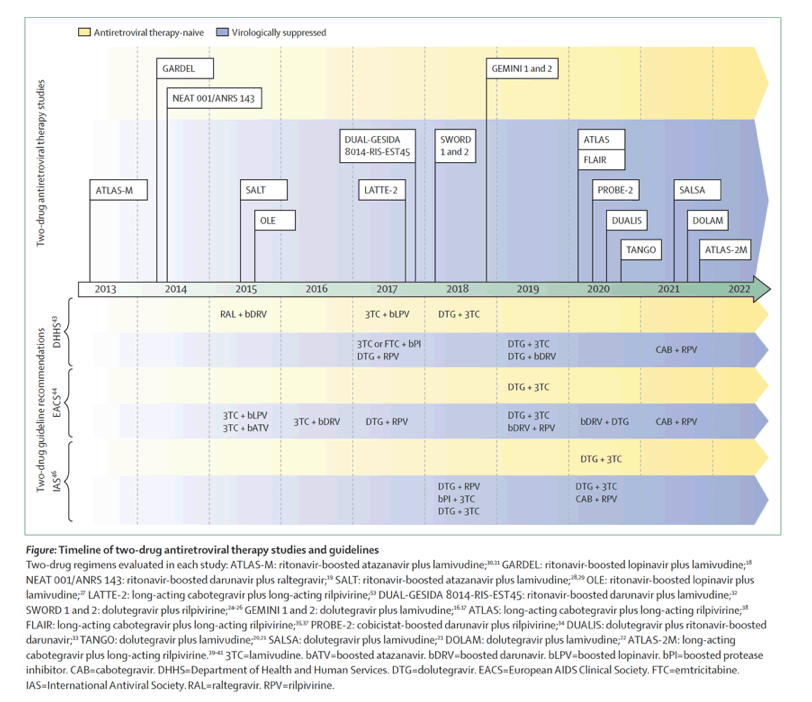| |
Two-drug regimens for HIV treatment
|
| |
| |
Download the PDF here
October 26, 2022
Kevin M Gibas, Sean G Kelly, Jose R Arribas, Pedro Cahn, Chloe Orkin, Eric S Daar, Paul E Sax, Babafemi O Taiwo
Summary
Combination therapy with three antiretroviral agents has been integral to successful HIV-1 treatment since 1996. Although the efficacy, adverse effects, and toxicities of contemporary three-drug regimens have improved, even the newest therapies have potential adverse effects. The use of two-drug regimens is one way to reduce lifetime exposure to antiretroviral drugs while maintaining the benefits of viral suppression. Multiple large, randomised trials have shown the virological non-inferiority of certain two-drug regimens versus three-drug comparators, including adverse effect differences that reflect known profiles of the antiretroviral drugs in the respective regimens. Two-drug combinations are now recommended in treatment guidelines and include the first long-acting antiretroviral regimen for the treatment of HIV-1. Recommended two-drug regimens differ in their risks for, and factors associated with, virological failure and emergent resistance. The tolerability, safety, metabolic profiles, and drug interactions of two-drug regimens also vary by the constituent drugs. No current two-drug regimen is recommended for people with chronic hepatitis B virus as none include tenofovir. Two-drug regimens have increased options for individualised care.
Introduction
In the mid-1990s, antiretroviral regimens consisting of three active drugs from at least two different drug classes became the standard of care for people with HIV. These regimens suppressed viral replication and restricted the development of resistance—the main limitations of the initial single and two-drug regimens of the late 1980s and early 1990s. Improvements in antiretroviral drug profiles have led to preferred three-drug regimens with high viral suppression rates and excellent resistance characteristics. The tolerability and safety of recommended antiretroviral drugs have also improved substantially. However, as any drug has potential adverse effects, use of as few drugs as possible, if appropriate, could be beneficial.
Despite the lack of virological efficacy of early two-drug antiretroviral therapy regimens, interest in two-drug antiretroviral therapy persisted as a way of reducing lifetime therapy exposure, specific drug toxicities, and cost.1, 2
This interest was increased with the knowledge that some antiretroviral drugs contribute to age-related end-organ and metabolic comorbidities, which is highly relevant with an increasing population of people with HIV older than 50 years.3, 4, 5
More than 30 unique antiretroviral drugs have been developed; about half of these are included in current HIV-1 treatment guidelines. Effective and safe regimens that contain only two drugs can and have been established, including the first complete long-acting HIV regimen.

|
|
| |
| |
|
|
|